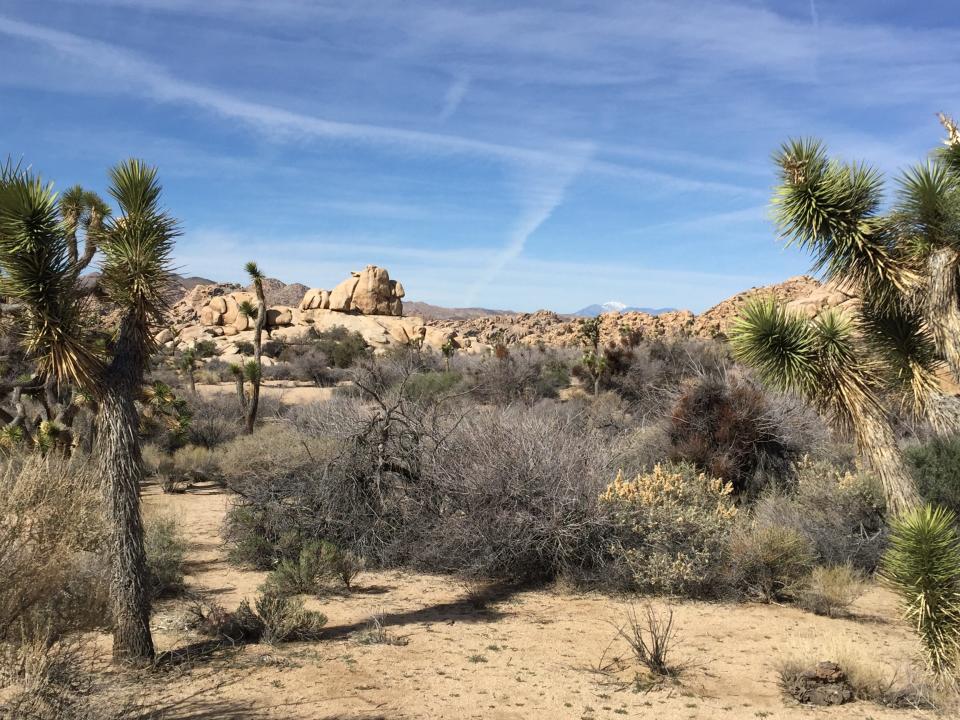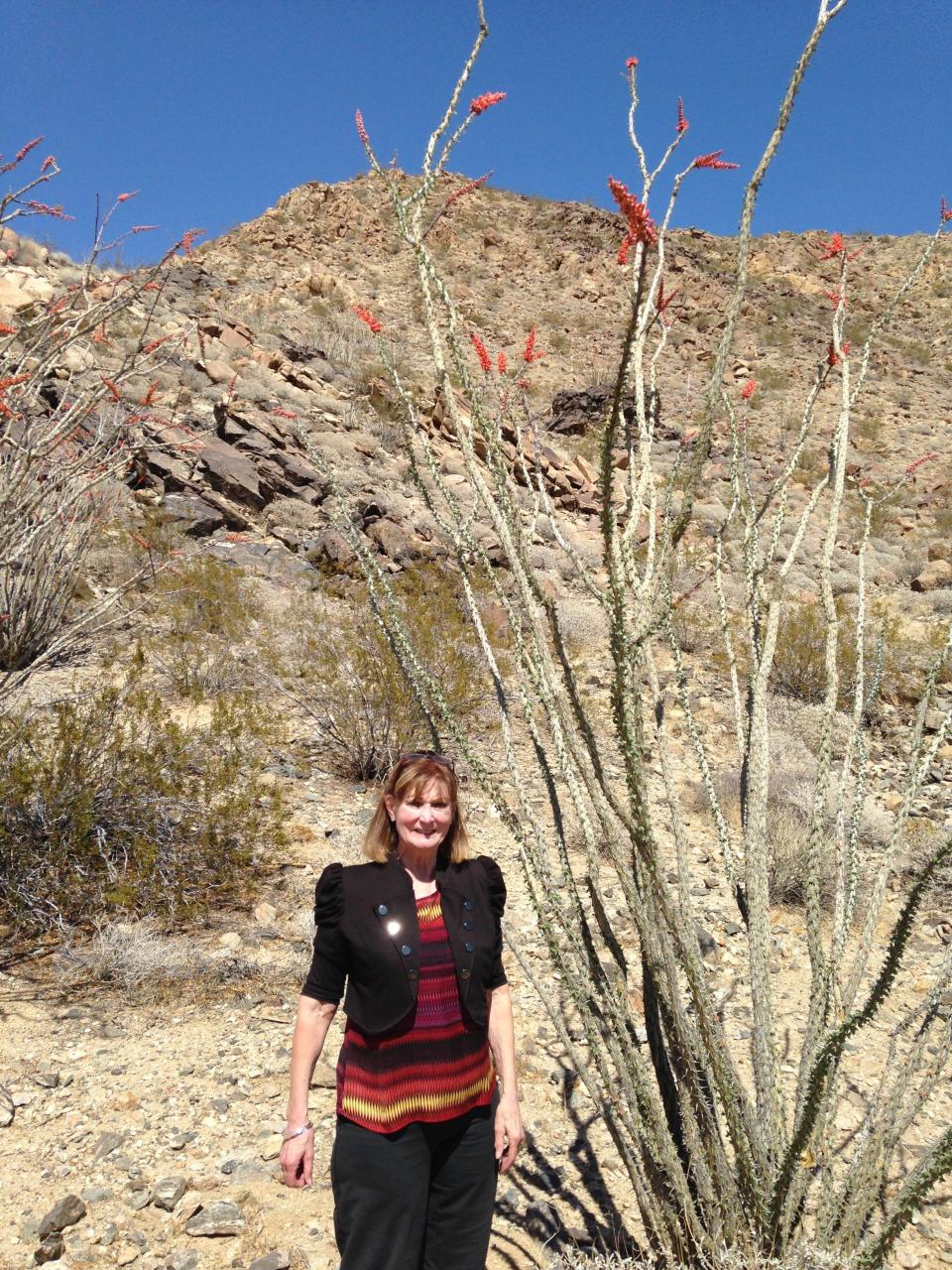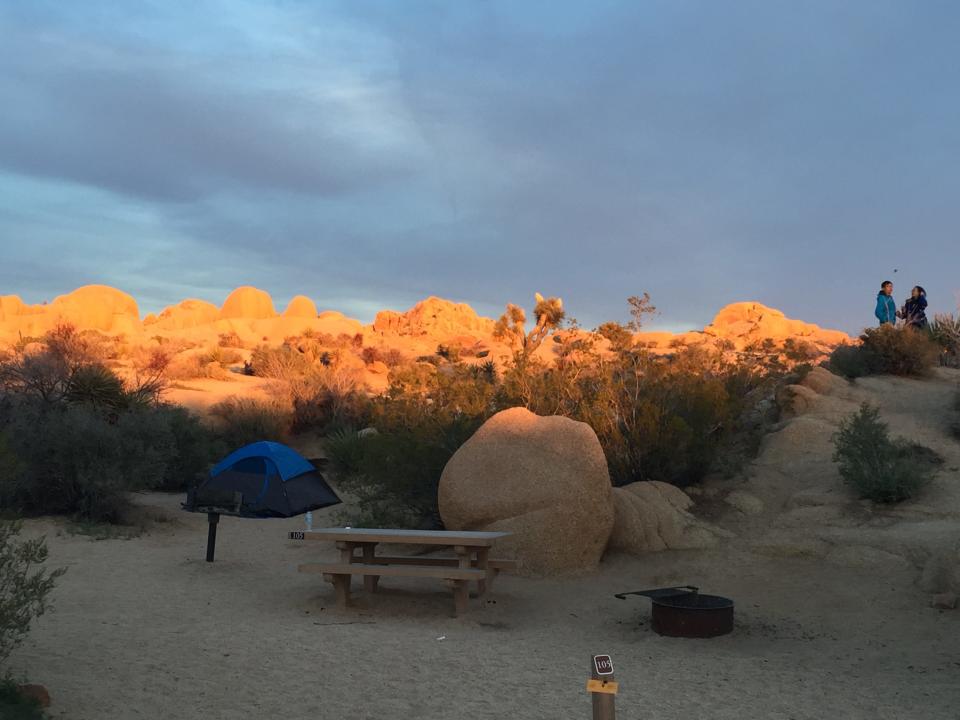Visiting Joshua Tree National Park? Here's what you need to know
Favorable reader reaction to last week’s article about Death Valley National Park, along with continuing rains and cool temps, prompts a preview of Joshua Tree National Park, located seven hours and about 450 miles south of San Joaquin County. This intriguing park is south of Death Valley and just northeast of the Palm Springs area.
So settle in as we tour a land of alien life forms and surprisingly diverse vistas spread throughout a national park that will change your view of the California desert. We usually enter the park from the north side, adjacent to Twentynine Palms. The park's nearly 800,000 acres are at the confluence of three of California's ecosystems. With more rainfall on the higher, northern part of the park, the Mojave Desert prevails – the habitat of the park's namesake Joshua Trees.

As one moves south through the park, steadily dropping in elevation, the Colorado desert takes over, with 18’ tall, spindly Ocotillo plants with slender red flowers, Smoketree, Mojave yucca, Brittlebush, and the eerie Cholla cactus – we never envisioned such creations.
Ask a Ranger about the campground "with all the rocks" (which we remembered from a previous visit). They will note that "all the campgrounds have huge rocks," share a map, and note the need to carry water into most campgrounds. Our favorite is Jumbo Rocks, the largest of all, with 120 campsites, offering marvelous sunsets over the Pinto Mountains; with the darkest desert skies, the stars in the Aurora Borealis are often remarkable at night.
With nine different campgrounds and about 500 developed campsites, Joshua Tree offers plenty of options. Most are first-come, first-served throughout the year; for the busy season, consider reservations through recreation.gov.

Numerous things to do in Joshua National Park
This wonderful park has numerous things to do, which include hiking on over 300 miles of trails, camping in one of nine developed campgrounds, rock climbing with thousands of established routes and bouldering options, stargazing in this International Dark Sky Park, Ranger programs, wilderness desert backpacking, wildflower viewing (depending on rain and temperatures), 4 x 4 backcountry roads, photography, bicycling, and horseback options.
The park's website offers several easy-to-moderate hiking options. Favorites include Arch Rock, a 1 1/2 mile trail taking you to the namesake arch, Oasis of Mara, a short, half-mile hike taking you to this desert oasis and Skull Rock, a walk of a little less than 2 miles, winding around huge boulder piles to the namesake Skull Rock. The short hike to Barker Dam, built in the early 1900s to capture rainwater, provides a lovely oasis for migratory birds.
To explore the park’s historic mining operations, look to the Lost Horse Mine Trail, a 4-mile hike offering visitors access to the most successful gold mine in the park. You’ll find remnants of the mine and its adjacent 10-stamp mill, which produced over 10,000 ounces of gold (worth about $8 million today) between 1894 and 1931.

Joshua Tree National Park offers gorgeous views
The Jumbo Rocks campground features jumbles of boulders and rock slabs thrust into the sky like pick-up sticks – a kid’s wonderland of climbing opportunities (though rangers warn the park is home to six species of rattlesnakes)! A few miles away, Hidden Valley is both a rock climbers delight and a scenic campground.
Visit the Keys View overlook, almost a mile in elevation, with a panoramic park view (one can see the San Andreas Fault in the valley below). At elevations above 3,000’, Joshua Trees thrive. These tall, rangy trees (a species of yucca adapted to high, arid lands) can reach 40’ tall.
Take your binoculars for viewing exotic species such as Chuckwallas, Desert tortoises, Greater roadrunners, Desert iguanas, and even Bighorn sheep (Rangers can offer tips for best viewing). No gas stations, restaurants, stores, or hotels/motels are inside the park. Look to towns outside the boundaries for overnight accommodations, like Twentynine Palms on the north side of Palm Desert/Palm Springs to the park's southwest. Temperatures in the spring are typically highs of 70–85°F and lows around 50°, depending on elevation.

Joshua Tree National Park side trips to consider
Extend your visit by including the Salton Sea. In the late 1800s, the California Development Company built canals to take water from the Colorado River to irrigate the desert region to the south of the Salton Sink (the Sink was similar to Death Valley, 275 feet below sea level, dry, arid, and almost no precipitation).
In 1906, huge floods on the Colorado River led to the creation of the Salton Sea– the entire volume of the river ripped down silted irrigation canals. It inundated the Salton Sink for 18 months, forming a 25 x 35-mile inland ocean, 55 feet deep and 220 feet below sea level! In the 1940s, ‘50s, and ‘60s, fish were introduced into the Sea, and the advent of air conditioning brought big resorts to several of the Sea’s towns: Bombay Beach and others on the east shore, Salton Sea Beach, Salton Sea Beach and Desert Shores on the west shore.
However, the best was not to come. Tropical storm Kathleen pounded the Imperial Valley in 1976, followed by tropical storm Doreen in 1977. The Sea rose a dozen feet, flooding these resorts and ruining the local economies. By the 1980s, property values collapsed, and owners abandoned the area. The Salton Sea is your destination if you are looking for modern-day ghost towns. Stop at the Salton Sea State Recreation Area, north of Bombay Beach, with a marina, visitor’s center, and pleasant camping on the shore of the Dead Sea.
For more info
Joshua Tree National Park, www.nps.gov/jotr; Camping, recreation.gov; Salton Sea, parks.ca.gov/?page_id=21261. Where are you traveling? Contact Tim, tviall@msn.com; enjoy your desert travels!
This article originally appeared on Visalia Times-Delta: Visiting Joshua Tree National Park? Here's what you need to know

